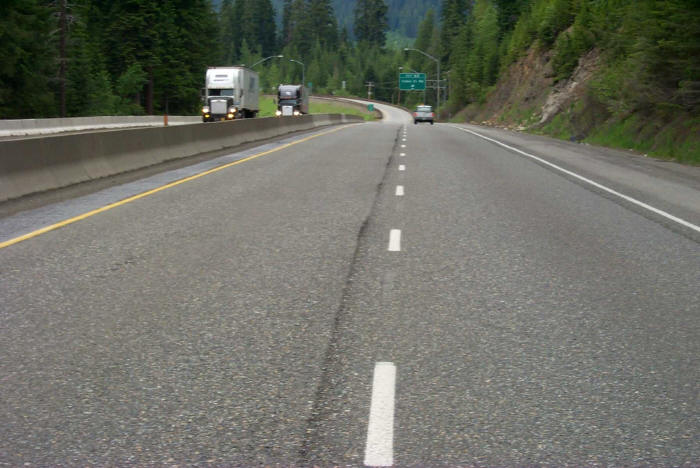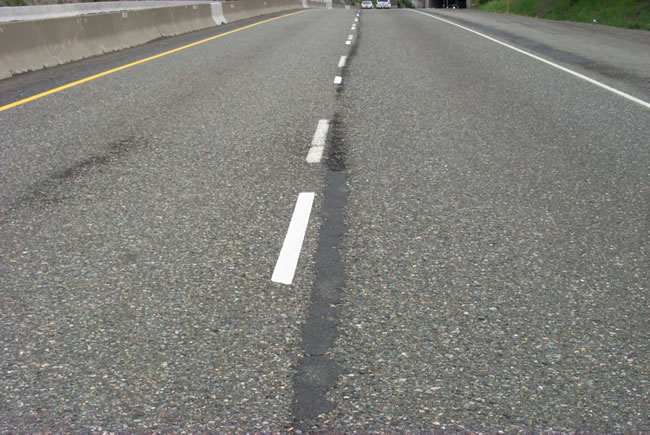Description
Bumps, elevation differences, a lack of mix or low density near or in a transverse or longitudinal joint.
Problem
Typically, poor transverse joints result in a slight bump, which can affect roughness. Poor longitudinal joints are generally lower in density, may fail prematurely from raveling or cracking, and may allow water infiltration into the base and subgrade.
Possible Causes
Poor construction, inadequate compaction or poor startup procedures.
Solutions
Use acceptable joint construction practices:
- Transverse joints. Roll transverse joints parallel to the joint. The beginning of a paving day almost always involves a transverse joint. When starting a paver up, place the paver screed on blocks on the cold side of the joint. The combination of the previously placed mat thickness (if any) and block thickness should equal the expected uncompacted thickness of the new mat. This will allow the correct amount of mix to be placed at the joint interface.
- Longitudinal joints. See the article on longitudinal joint construction.


